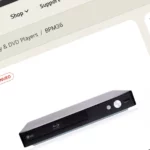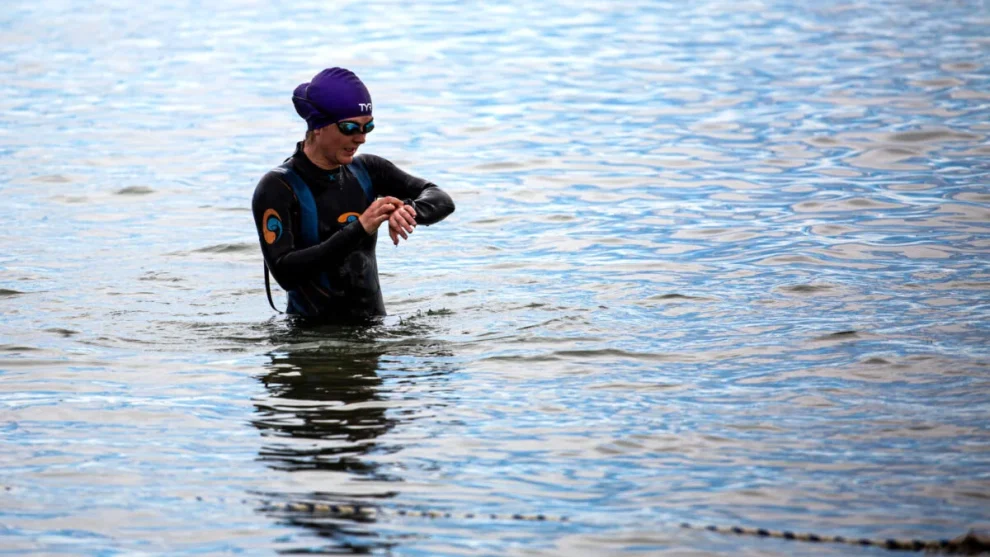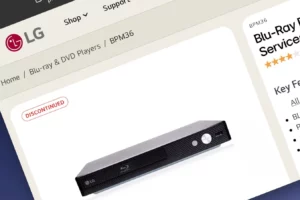Triathletes push the boundaries of human performance, tackling swimming, cycling, and running in a single event. As technology advances, many of these athletes have turned to smartwatches to track their performance, monitor their health, and guide their training. But in a sport where seconds can make the difference between podium placement and disappointment, a crucial question arises: How accurate are smartwatches, and can triathletes truly trust them?
The Rise of Smartwatches in Triathlon
Smartwatches have become ubiquitous in the world of endurance sports, with brands like Garmin, Apple, Polar, and Suunto leading the charge. These devices promise to deliver a wealth of data, from heart rate and GPS tracking to advanced metrics like VO2 max estimation and recovery time. For triathletes, who need to track performance across three disciplines, the allure of a single device that can do it all is undeniable.
John Smith, a professional triathlete and coach, explains: “When smartwatches first hit the market, they were a game-changer. Suddenly, we had access to data that previously required multiple devices or lab testing. It opened up new possibilities for training and racing strategies.”

Breaking Down Smartwatch Accuracy
To understand whether triathletes can trust smartwatches, we need to examine their accuracy across various metrics:
1. GPS Accuracy
GPS tracking is crucial for triathletes to measure distance, pace, and route. Studies have shown that most high-end smartwatches are reasonably accurate for GPS tracking, with error rates typically less than 2-3% for distance measurement.
Dr. Emily Johnson, a sports technology researcher at MIT, notes: “Modern smartwatches use multi-band GNSS systems, which significantly improve accuracy compared to earlier models. However, factors like tree cover, tall buildings, and even arm swing can affect readings.”
Key findings on GPS accuracy:
- Open water swimming poses the biggest challenge due to signal loss during submersion
- Cycling tends to have the best GPS accuracy due to unobstructed sky view
- Running accuracy can vary based on environment (trail vs. road) and pace
2. Heart Rate Monitoring
Heart rate data is essential for triathletes to gauge effort and monitor training zones. Optical heart rate sensors in smartwatches have improved significantly but still face challenges:
- Accuracy tends to decrease during high-intensity activities
- Wrist movement and fit can affect readings
- Darker skin tones and tattoos can interfere with sensor accuracy
A 2021 study published in the Journal of Sports Sciences found that wrist-based heart rate monitors had an average error rate of 5-10% compared to chest strap monitors, with higher error rates during intense exercise.
3. Calorie Expenditure
Many triathletes use calorie tracking to manage their nutrition strategies. However, this is one area where smartwatches often fall short.
Nutritionist and endurance athlete Sarah Lee explains: “Calorie expenditure estimates from smartwatches can be off by as much as 20-30%. They use algorithms based on height, weight, and heart rate, but don’t account for individual metabolic differences or the efficiency gains that come with training.
4. Swimming Metrics
For the swimming portion of a triathlon, smartwatches offer features like stroke counting, SWOLF scores, and distance tracking. Accuracy here varies widely:
- Stroke counting is generally reliable, with error rates under 5% for most devices
- Distance tracking in pools is usually accurate if the pool length is set correctly
- Open water swim tracking remains challenging due to GPS limitations
5. Advanced Metrics (VO2 Max, Recovery Time, etc.)
Many smartwatches now offer advanced physiological metrics that were once the domain of sports labs. While these can provide valuable insights, their accuracy is often questioned.
Dr. Michael Chen, an exercise physiologist, cautions: “Features like VO2 max estimation and recovery time predictions should be taken as rough guidelines rather than gospel. They’re based on population averages and can’t account for all individual variations.
Factors Affecting Smartwatch Accuracy
Several factors can influence the accuracy of smartwatch data:
- Device Quality: Higher-end models generally offer better accuracy and more features.
- Proper Fit: A loose or improperly positioned watch can lead to inaccurate readings, especially for heart rate.
- Software Updates: Regular updates can improve accuracy and add new features.
- User Error: Incorrect settings or improper use can skew results.
- Environmental Conditions: Extreme temperatures, humidity, and altitude can affect sensor performance.
- Individual Physiology: Factors like skin tone, body composition, and unique movement patterns can influence accuracy.
Real-World Testing: What Triathletes Say
To get a real-world perspective, we spoke with several professional and amateur triathletes about their experiences with smartwatches:
Lisa Thompson, Ironman champion: “I’ve found my smartwatch to be an invaluable training tool, but I don’t rely on it 100% during races. I use it more as a guide and still trust my perceived effort, especially in critical moments.”
Mark Rodriguez, age-group triathlete: “The swim tracking has been a weak point for me. I’ve had races where my watch showed I swam an extra 500 meters, which can be really discouraging if you trust it blindly.”
Emma Chen, triathlon coach: “I tell my athletes to use smartwatches as one tool in their arsenal, not the be-all and end-all. It’s important to correlate the data with how you actually feel and perform.”
Comparing Smartwatches to Traditional Methods
To gauge the true accuracy of smartwatches, it’s helpful to compare them to traditional, lab-based methods:
- GPS vs. Measured Courses: In a controlled study, high-end smartwatches were found to be within 1-2% accuracy compared to officially measured race courses.
- Optical HR vs. ECG: While improving, optical heart rate sensors still lag behind the gold standard of ECG measurements, especially during high-intensity activities.
- Estimated vs. Direct VO2 Max: Smartwatch VO2 max estimates have shown correlations of 0.7-0.8 with laboratory tests, indicating good but not perfect alignment.
- Smartwatch Metrics vs. Athlete Perception: Interestingly, studies have shown that experienced athletes’ perceived exertion often aligns more closely with laboratory measurements than smartwatch data in some cases.
The Future of Smartwatch Accuracy
As technology continues to advance, we can expect improvements in smartwatch accuracy:
- Improved Sensors: Next-generation optical sensors and the integration of ECG capabilities in more devices promise better heart rate accuracy.
- AI and Machine Learning: Advanced algorithms could provide more personalized and accurate data interpretation.
- Integration with Other Devices: Smartwatches may increasingly work in tandem with other sensors (like foot pods or bike computers) for improved accuracy.
- New Metrics: Emerging technologies might allow for real-time blood glucose monitoring, hydration status, or even direct lactate measurements.
Dr. Lisa Park, a wearable technology expert, predicts: “Within the next five years, we could see smartwatches that rival the accuracy of many lab-based tests. The key will be in personalization and AI-driven data analysis.”
Best Practices for Triathletes Using Smartwatches
For triathletes looking to maximize the benefits of their smartwatches while understanding their limitations, consider these best practices:
- Calibrate and Update Regularly: Ensure your device is running the latest software and calibrate it according to the manufacturer’s instructions.
- Verify Key Workouts: For critical training sessions, consider using additional verification methods (like a chest strap for heart rate).
- Understand Your Device’s Strengths and Weaknesses: Each model has its quirks; learn what your watch does well and where it falls short.
- Use Trend Data: Focus on patterns and trends over time rather than obsessing over single data points.
- Combine with Subjective Measures: Correlate watch data with how you feel, using tools like perceived exertion scales.
- Proper Fit and Positioning: Ensure your watch is snug and properly positioned, especially for heart rate monitoring.
- Multiple Data Sources: For races, consider using a bike computer in addition to your watch for redundancy.
The Psychological Impact of Smartwatch Data
An often-overlooked aspect of smartwatch use is its psychological impact on athletes. The constant availability of data can be both a blessing and a curse.
Sports psychologist Dr. Jennifer Lee warns: “Some athletes become overly reliant on their devices, leading to anxiety if they have to train or race without them. It’s important to maintain a healthy relationship with the technology and not let it override your internal cues.”
On the flip side, smartwatches can provide positive reinforcement and motivation. Many triathletes report that seeing their progress quantified helps them stay committed to their training plans.
Conclusion: A Powerful Tool, Not a Perfect One
As we’ve explored the question of smartwatch accuracy for triathletes, a nuanced picture emerges. While these devices have come a long way in terms of accuracy and features, they are not infallible. GPS tracking and basic metrics like pace and distance are generally reliable, but more advanced features should be approached with a degree of skepticism.
Can triathletes trust smartwatches? The answer is yes, but with caveats. These devices are powerful tools that can provide valuable insights into training and racing, but they should not be relied upon exclusively. The most successful triathletes use smartwatches as one component of their overall strategy, combining the data with their own experience, perceived effort, and input from coaches.
As technology continues to improve, we can expect smartwatches to become even more accurate and useful for triathletes. However, the human element of endurance sports will always remain crucial. The ability to listen to one’s body, make strategic decisions in the heat of competition, and push beyond perceived limits are skills that no device can fully replicate.
Ultimately, smartwatches are revolutionizing how triathletes train and compete, offering unprecedented access to personal performance data. While not perfect, these devices are invaluable tools when used wisely. As the technology evolves, so too must athletes’ approach to using it – embracing its benefits while understanding its limitations.
For the dedicated triathlete, the smartwatch is not a replacement for hard work, proper training, and race-day instincts. Instead, it’s a sophisticated ally in the quest for peak performance – a digital training partner that, when used correctly, can help push the boundaries of human endurance.
















Add Comment